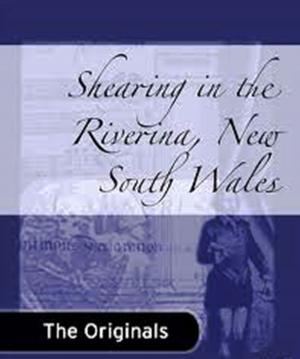| Author: | Louis Becke | ISBN: | 1230000140480 |
| Publisher: | WDS Publishing | Publication: | June 9, 2013 |
| Imprint: | Language: | English |
| Author: | Louis Becke |
| ISBN: | 1230000140480 |
| Publisher: | WDS Publishing |
| Publication: | June 9, 2013 |
| Imprint: | |
| Language: | English |
A wild, blustering day in Sydney, the Queen City of the Southern Seas.
Since early morn a keen, cutting, sleet-laden westerly gale had been
blowing, rattling and shaking the windows of the houses in the higher
and more exposed portions of the town, and churning the blue waters of
the harbour into a white seethe of angry foam as it swept outwards to
the wide Pacific.
In one of the little bays, situated between Miller's Point and Dawe's
Battery, and overlooked by the old-time Fort Phillip on Observatory
Hill, were a number of vessels, some alongside the wharves, and others
lying to their anchors out in the stream, with the wind whistling
through their rain-soaked cordage. They were of all rigs and sizes,
from the lordly Black Ball liner of a thousand tons to the small fore
and aft coasting schooner of less than fifty. Among them all there was
but one steamer, a handsome brig-rigged, black-painted and
black-funnelled craft of fifteen hundred tons, flying the house flag of
the Peninsular and Oriental Company. Steamers were rare in Sydney
Harbour in those days (it was the year 1860), and the Avoca had pride
of place and her own mooring buoy, for she was the only English mail
boat, and her commander and his officers were regarded with the same
respect as if they and their ship were the admiral and staff of the
Australian squadron.
Leaning with folded arms upon one of the wharf bollards, and apparently
oblivious of the driving sleet and cutting wind, a shabbily dressed man
of about thirty years of age was looking, pipe in mouth, at the mail
boat and the sailing vessels lying in the stream. There were four in
all--the steamer, an American whaling barque, a small brig of about two
hundred tons flying the Hawaiian Island colours, and a big, sprawling,
motherly-looking full-rigged ship, whose huge bow ports denoted her to
be a lumberman.
The man put his hand in his pocket and jingled together his few small
remaining coins; then he turned away and walked along the wharf till he
reached the side of a warehouse, the lee of which was sheltered from
the wind and rain. He leant his back against the wall and again
handled the coins.
A wild, blustering day in Sydney, the Queen City of the Southern Seas.
Since early morn a keen, cutting, sleet-laden westerly gale had been
blowing, rattling and shaking the windows of the houses in the higher
and more exposed portions of the town, and churning the blue waters of
the harbour into a white seethe of angry foam as it swept outwards to
the wide Pacific.
In one of the little bays, situated between Miller's Point and Dawe's
Battery, and overlooked by the old-time Fort Phillip on Observatory
Hill, were a number of vessels, some alongside the wharves, and others
lying to their anchors out in the stream, with the wind whistling
through their rain-soaked cordage. They were of all rigs and sizes,
from the lordly Black Ball liner of a thousand tons to the small fore
and aft coasting schooner of less than fifty. Among them all there was
but one steamer, a handsome brig-rigged, black-painted and
black-funnelled craft of fifteen hundred tons, flying the house flag of
the Peninsular and Oriental Company. Steamers were rare in Sydney
Harbour in those days (it was the year 1860), and the Avoca had pride
of place and her own mooring buoy, for she was the only English mail
boat, and her commander and his officers were regarded with the same
respect as if they and their ship were the admiral and staff of the
Australian squadron.
Leaning with folded arms upon one of the wharf bollards, and apparently
oblivious of the driving sleet and cutting wind, a shabbily dressed man
of about thirty years of age was looking, pipe in mouth, at the mail
boat and the sailing vessels lying in the stream. There were four in
all--the steamer, an American whaling barque, a small brig of about two
hundred tons flying the Hawaiian Island colours, and a big, sprawling,
motherly-looking full-rigged ship, whose huge bow ports denoted her to
be a lumberman.
The man put his hand in his pocket and jingled together his few small
remaining coins; then he turned away and walked along the wharf till he
reached the side of a warehouse, the lee of which was sheltered from
the wind and rain. He leant his back against the wall and again
handled the coins.















